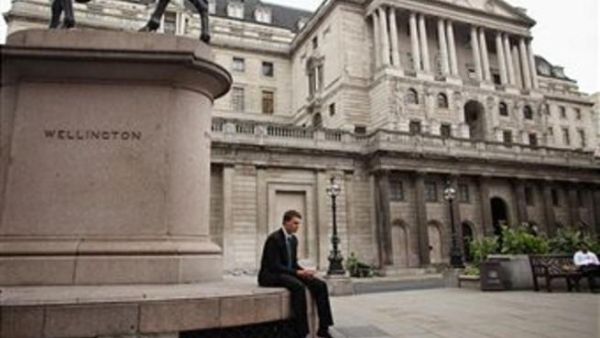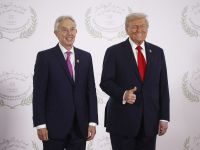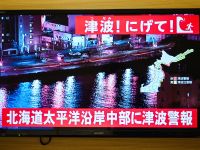The current global economic crisis is an opportunity to enhance gross welfare to the masses, according to R. Seetharaman, Group CEO, Doha Bank.
“Financial regulators were not equipped to see the risk concentrations and flawed incentives behind the financial innovation boom. Neither market discipline nor regulation were able to contain the risks resulting from rapid innovation and increased leverage, which had been building for years,” Seetharaman said. He was talking at the United Nations General Assembly’s ‘High-Level Thematic Debate on the State of the World Economy’ event held recently. He said, “Policy makers failed to sufficiently take into account growing macroeconomic imbalances that contributed to the buildup of systemic risks in the financial system and in housing markets. Financial supervisors were preoccupied with the formal banking sector, not with the risks building in the shadow financial system.” He added, “The key areas which required attention from regulatory level are scope of regulation, market discipline, information gaps and systemic liquidity provision. The key areas which required attention at the macroeconomic policy level are response of monetary policy to systemic risks, strong fiscal policies, and regulation of international capital flows and alignment of fiscal and monetary policies. Today’s Euro crisis is a clear case of conflict between monetary and fiscal policies.”
Seetharaman highlighted the regulatory reforms in response to the crisis. He said “In response to the crisis the global regulatory reforms had been actively reviewed under the leadership of G20 countries in co-ordination with Financial Stability Board (FSB), International Monetary Fund (IMF) and Bank for International Settlements (BIS).The Dodd–Frank Wall Street Reform and Consumer Protection Act in the US implemented the regulatory reforms in response to the crisis.”
“The Volcker’s Rule was enacted under this regulation to restrict proprietary trading. The SEC also proposed tougher disclosure rules for Hedge fund and private equity firms.FSB, IMF and BIS are working on macro-prudential policy frameworks, including tools to mitigate the impact of excessive capital flows. Policy framework for systemically important financial institutions, regulation and oversight of shadow banking, risk practices on structured products were some of the areas which required review in the light of current crisis. Basel 3 is also planned to be implemented,” the senior banker and economist added.
Seetharaman correlated the UN Millennium Development goals with regulatory reforms and economic development. He said, “The current realignment of global architecture will support the achievement of one of the eight UN Millennium Development goals ‘to develop a global partnership for development’, which aims to develop further an open, rule-based, predictable, non-discriminatory trading and financial system.”
“Economies need to integrate the principles of sustainable development into their policies and programs and reverse loss of environmental resources. This will also enable such economies to achieve the UN Millennium Development goal of ‘ensure environmental sustainability’. Qatar’s National Vision 2030 has also considered environment development as one of the pillars of its vision. Financial sector can also participate in this sustainable development by taking initiatives to “Manage Climate Change and Mitigate Global Warming.”
Seetharaman highlighted the foreign investment trends and currency market trends at the event. He said: “Global Foreign Direct Investment (FDI) outflows rose in 2011 by 16 percent to a peak of USD1.66 trillion, surpassing the pre-crisis levels. Global investment flows requires clarity in the universal standards of measurement for valuation of investments. Uniform accounting principles should be followed to facilitate meaningful comparison. The risk and other measurement mechanisms pertaining to securitisation of assets should be strengthened to protect the interests of investors. The capital inflows to developing economies also increased due to quantative easing measures adopted after the crisis by developed economies. The actions by Central Bank of Japan and Switzerland to prevent the strengthening of their currencies in recent times could encourage various economies to follow similar practices, result in a currency war and a trade war.”
Seetharaman highlighted the GCC economic trends. He said, “The SWOT analysis of GCC Economies revealed opportunities in the areas of infrastructure and Non Renewable Energy. The rationale for diversification includes supporting economic growth, complement hydrocarbon sector, generate employment, make the economy more resilient to external shocks, improve infrastructure and support climate change. GCC’s economies have promoted stability and transparency in their economic development through visionary leadership and long term plans for execution.”
Seetharaman gave insights on GCC’s Economies Vision, fiscal policies and long term strategies. He said, “Saudi Arabia’s Vision 2020 is best realized by diversifying the economy into manufacturing sector and in SME segments. Cluster development will help building up SMEs. The ninth five-year development plan of Saudi Arabia, between 2009 - 2014, allocates more than 50 percent to human resources”
“Oman National Vision 2020 aims to shift crude oil contribution to below 10 percent of the GDP and increase natural gas and industrial to above 10 percent and 20 percent respectively. Oman is expected to be a non-oil dependent country as it increases the measures of diversification into the services, industrial and financial sectors. The Abu Dhabi Economic Vision 2030 focuses on economic development, social development, infrastructure development and environment sustainability. Vision for Abu Dhabi consists of a secure society and a dynamic open economy. Dubai is introducing a master plan for urban development that is expected to open up about 950,000 jobs by 2020. Jebel Ali will be one area which will see major development growth. Kuwait’s budget expenditure of 2012-13 is going to expand by 13.4 percent in 2012-13 to $79 billion,” he added.
Seetharaman gave insights on Qatar’s National Development Strategy. He said, “The Qatar National Development Strategy (NDS) 2011-2016 will set a path towards achieving the goals of Qatar National Vision 2030.Aggregate GDP growth in 2012-2016 is expected to average to 6.9 percent with Hydrocarbon GDP growth expected to be 4.4 percent and Non- Hydrocarbon GDP to be at 9.1 percent. Services will be one of the major drivers of the economy. The ratio of non-hydrocarbon private investment to total GDP could reach 15 percent by 2016 which is nearly double its share of 2009.”








